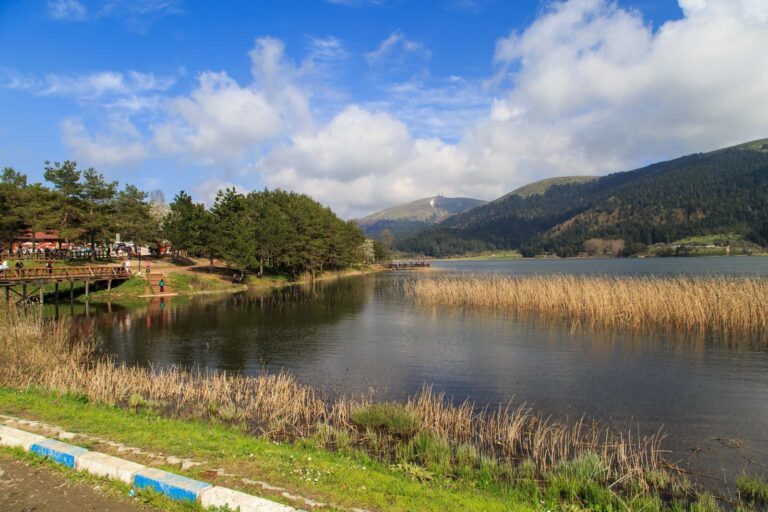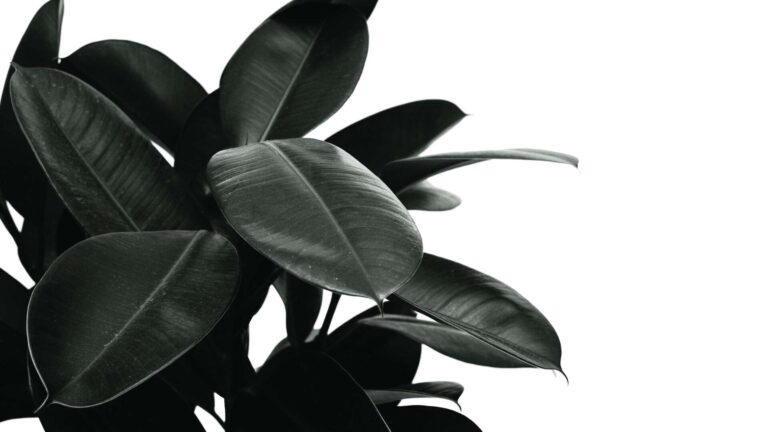How To Fix Hosta Scorch: Effective Ways to Handle the Situation
Hostas are such beautiful plants, and so many people love them. Unfortunately, Hostas can be pretty delicate and must be treated with care. They can also get damaged relatively easily. If you are experiencing scorch on hosta leaves, the first step to solving the problem is identifying the root cause.
In this article, I’ll explain what causes hosta leaves to wilt and “How to Fix Hosta Scorch Problems.”
Signs of Hosta Scorch
Hostas are especially prone to leaf scorch, browning, and yellowing of the leaves. Several things may contribute to this issue, including drought, excessive sunlight, overfertilization, or plant diseases. So it’s necessary to take action to fix the root cause of the scorch as soon as possible.

How To Fix Hosta Scorch
First, we need to know the primary factors that can cause leaves to wilt on hosta plants. It’s pretty simple to resolve the issue without knowing the actual cause.
Overwatering
When hostas are overwatered, the leaves will become saturated and unable to absorb moisture from the soil.
The plant’s leaves become discolored and fall off as a result. To fix this problem, give your hosta plants enough water but not so much that they’re constantly soggy or standing in pools of water.
Lack of nutrients
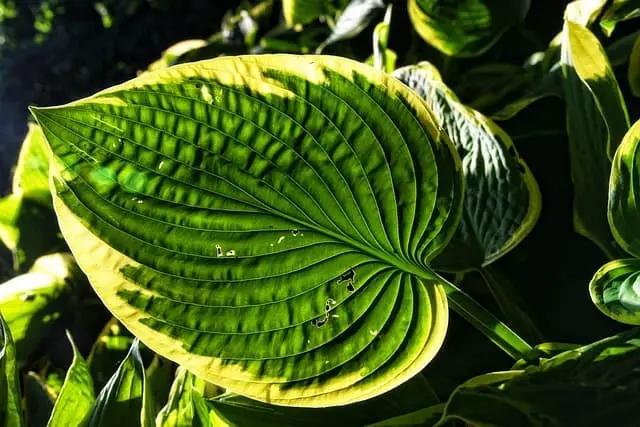
Hosta leaves are not as sturdy as other plants regarding nutrient uptake. The hosta plant’s leaves will begin to yellow if it doesn’t get proper nutrition, and they will fall off eventually.
To fix this problem, fertilize your hostas regularly with an excellent organic fertilizer or water-soluble NPK fertilizer.
Scorch from the inside out.
This occurs when fungal or bacterial problems damage the yellow leaves, which fall off the plant. Take action immediately to avoid further damage if you notice these symptoms on your hosta plants.
To fix this problem, remove the infected leaves and give the plant a good cleaning. Then add compost or manure to the planting area to help improve hosta health. Before it’s too late, you’ll need to treat your plant with the proper fungicide or antibiotic.
Too much sun or heat
Hosta leaves are adapted to thrive in sunny locations, but if the plants are sun-soaked for too long, the leaves will scorch.
To fix this problem, shade the hosta plants during the hottest part of the day or move them to a cooler location in your garden.
Otherwise, move your hosta to a shady location when the sun is at its most potent during the midday hours. If you live in an area with high temperatures throughout the year, consider using grow lights to supplement natural sunlight.
Dryness
The hosta plant’s leaves will turn yellow and drop off if the soil is too dry.
To fix this problem, avoid letting the soil grow too wet while watering your hostas. If you have to irrigate your plants regularly, make sure to use quality organic mulch to help keep moisture in the soil.
Transplant shock
Hosta plants are hardy and often recover from transplanting, but if the plant is not given time to adjust to its new location, it may suffer.
To fix hostas suffering from transplant shock, give the hosta time to settle in by watering it deeply and fertilizing it according to the soil label. Repotting into a new container when appropriate also helps promote root growth.
Poor drainage
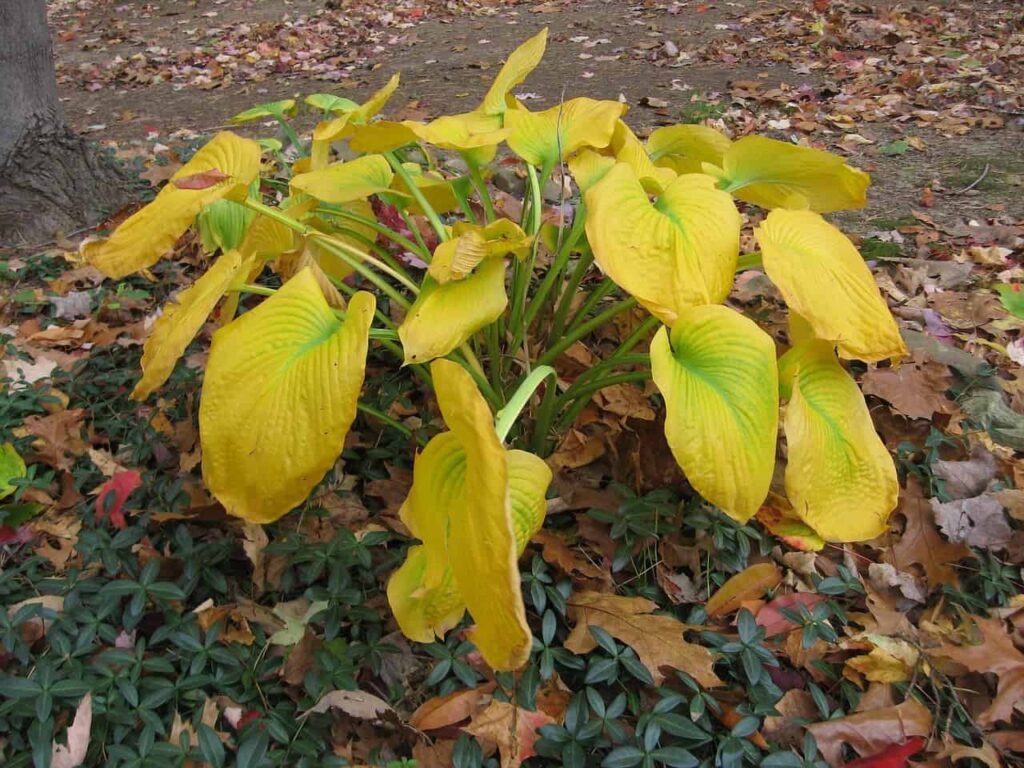
Hosta plants are best grown in permeable soil(well drained). Excess water doesn’t accumulate to cause root rot. If the hosta plant is receiving too much water, it may be necessary to adjust the pot size or add a drainage mat to the plant. If hosta roots rot, remove all affected root sections. Very heavy watering should also be avoided to prevent further root damage.
Hosta plants are hardy and often recover from too-wet soil. Still, damage can occur if the hosta does not have time to adjust to its new location and receives continuous moisture streaming from overhead irrigation or rainwater.
To fix this problem, first, determine how much water your hosta receives each day by digging a hole next to the hosta’s root ball and filling it with enough fresh soil, so the leaves are just below the surface.
Pests and diseases
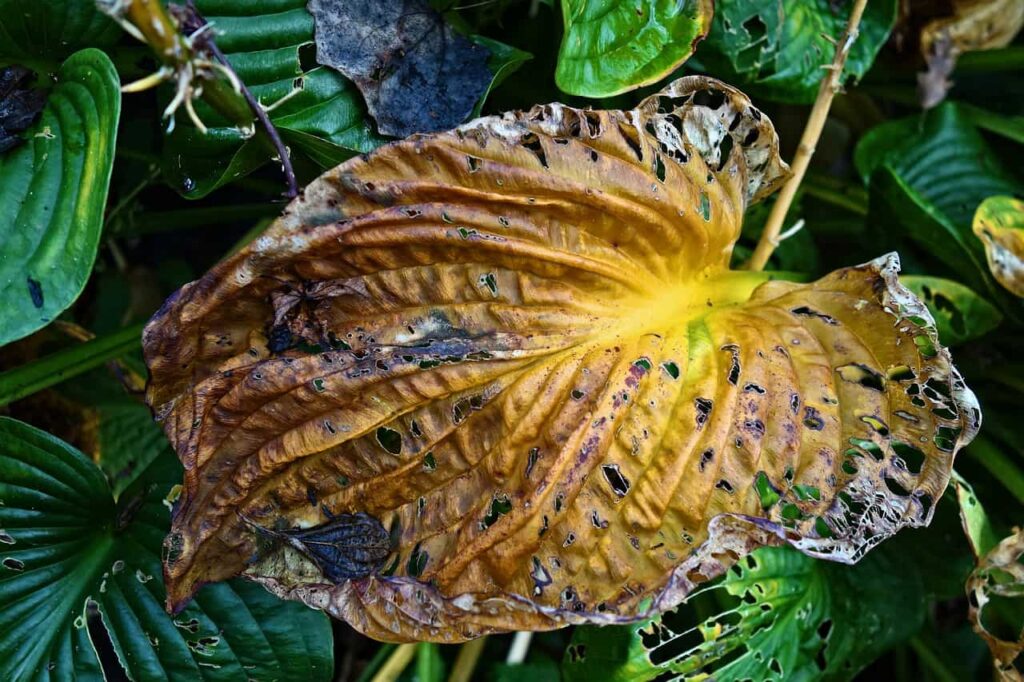
Hostas are susceptible to various pests during the growing season when they are actively growing and once the hosta is established. Check for yellowing of leaves or stem aging caused by a fungal infection, small holes in leaves that could indicate damage from nematodes (worms), stunted growth, brown patches on foliage due to leaf scorch or root rot, insect infestations such as aphids, and scale insects.
If you notice any of these signs on Hosta plants, take action to treat the pest or disease as soon as possible with a product approved for the plant species.
I believe that slugs must find Hostas to be a gourmet delicacy! Due to their large, shaded leaves, hostas are particularly susceptible to slug and snail damage. By removing any unhealthy leaves, you will decrease the number of slugs drawn to your hostas. If slug or snail damage is severe, you may need to do a foliar feeding with hosta fertilizers to help the plants get enough nutrients and moisture.
Poor soil quality
If the hosta plant grows in poor soil, it will not be able to take up water and nutrients efficiently. Add organic matter such as leaves, compost, or aged manure to the plant area to improve drainage and help the Hosta roots find moisture and nutrients.
Frost damage
Hostas are susceptible to frost damage, especially when growing in areas where the temperature falls below freezing. Try to plant hostas in areas that receive full sunlight and avoid shaded locations. Look for yellowing of leaves or stem edges, sunken roots, and dieback of branches near the ground.
Sclerotium blight
Hostas are vulnerable to the advanced fungal disease sclerotium blight, which can cause leaves to turn yellow, wilt, and die. Treatment with a fungicide is usually necessary to prevent further damage. If you experience any common problems with your hosta plants, take action to fix the issue as soon as possible.
Crown Rot
The crown of hosta leaves is affected by the fungus known as “crown rot.” Symptoms include stunted growth and branch dieback, in addition to the wilting, yellowing, and browning of leaves. If you experience crown rot on your hosta plants, take action to fix the problem as soon as possible with an approved fungicide. It is feasible to prevent this by providing adequate irrigation and mulching to keep the roots cool throughout the heat.
Petiole rot
Hosta petiole rot is a fungal disease that attacks the petioles (the stalk-like structures at the base of hosta leaves). It causes the leaves to turn yellow and die. If you experience such petiole rot on your hosta plants, take immediate action to fix the problem as soon as possible with quality fungicide. Again, keeping the roots cool in the summer by providing ample irrigation and mulching is a preventative measure.
It is good to know how to fix hosta scorch so the plant can recover from this disease. The fungi thrive in moist conditions and cause damage by feeding on their crowns, roots, foliage, and stems.
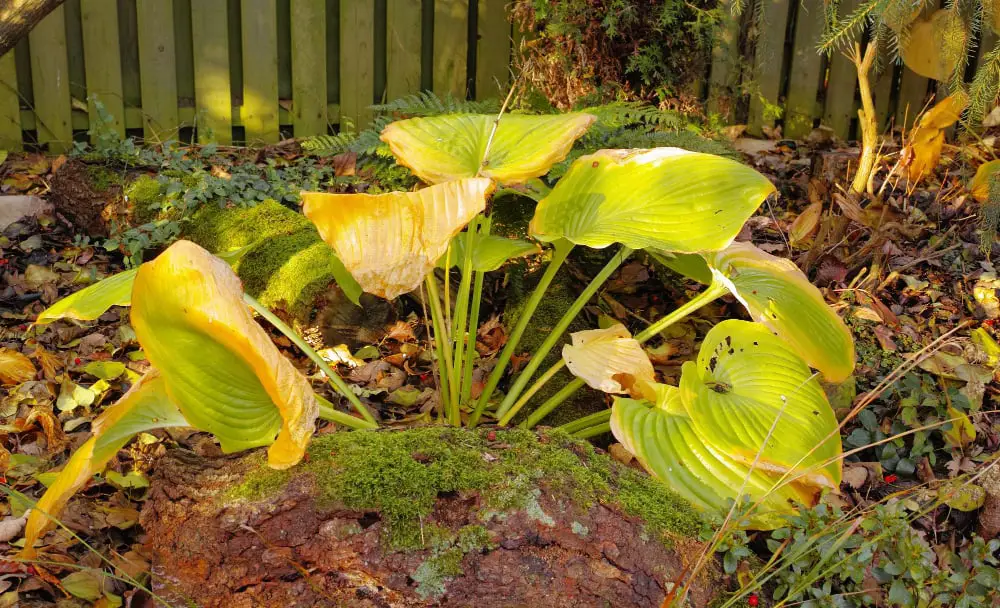
Questions:
How do you know if your Hosta has too much sun?
If you notice the yellowing and wilting of your Hosta, it may be time to move them out of the sun. This might seem like a drastic step, but if your Hosta is exposed to excessive sunlight, it can damage the basal stems (the underground part of the plant), leading to root rot or even death.
When choosing a location for your hostas, try to place them in areas that receive partial shade or filtered sunlight. If all else fails, cover them with plastic wrap during peak hours when the sun is most intense.
Should I remove damaged hosta leaves?
Ultimately, it is up to you whether or not you decide to take action. Some people may choose to remove damaged hosta leaves, while others may not feel that they need to do so. If any fungicides or other pesticides are present in the leaves, wear gloves when handling them.
Should I cut off the brown hosta leaf edges?
The edges of the leaf blades appear to have been browned or yellowed. It is a situation when every leaf on a single branch is impacted. It can be due to mechanical damage. There is too much water and feeding events on older branches. When leaf stems die and fall off with little effect on other leaves, they cause additional stress, resulting in fungi-induced damage at nodes along old stem margins. When this occurs from autumn onwards, there may also be wilting caused by overwatering.
How often should you water hostas?
It depends on many variables, including the climate of your Hostas. However, general recommendations suggest watering them every 2-3 days in dry weather and every 7–10 days in wet weather. Remember to water deeply and allow the soil to moisten before fully applying additional fertilizers or pesticides.
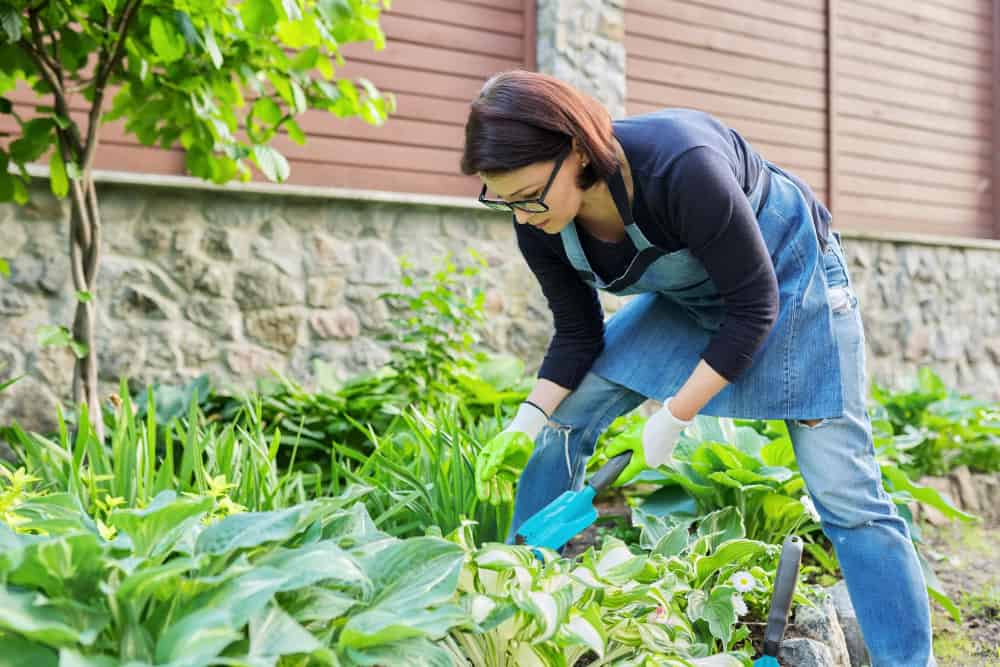
Conclusion
Just a few tips and tricks of Hosta care can make such a big difference. With the right tools, knowledge, and love for these plants, you, too, can help bring back the beauty in your garden!
It is important to choose the correct variety when planting a hosta. You can also choose different colors, making a particular variety more appealing. Whatever the reason, knowing how to fix hosta scorch is essential.
To ensure that your hosta thrives for years ahead, try some of the tips mentioned above to fix hosta scorch problems!
Reference :-




